Update: I missed a couple of grids in the first version of the story, AllCity updated their stats, and I removed Alife Virtual’s stats from the report because of questions about their accuracy. Read full story here.
Only a small handful of grids had problems this month, while the rest maintained their size or grew, but those few dragged the region numbers down by 1,339 this month, so that the total land area of OpenSim, in standard region equivalents, is now 61,947 regions.
However, registered users and active user numbers both showed healthy growth.
The biggest land loser was Virtual Worlds Grid, which is currently undergoing some maintenance and did not have complete varregions counts, reporting only the number of named regions. This resulted in a paper loss of 820 regions. Avination and AviWorlds were both down, affecting land area, registered users, and active user stats.
There’s still no word on when Avination is coming back up. The grid, owned by OpenSim core developer Melanie Thielker, is a major closed commercial grid and had around 500 regions, 500 active users, and more than 80,000 registered users in June, the last time we were able to see its stats.
StarLight World — also billed as “Greeklife World” on its welcome screen — lost 220 regions, for a new total of 573. The grid owners have informed me that GreekLife Grid Club is the official name of the grid, and the database has been updated to show that.
Virtual Brasil lost 203 regions, though its active users increased.
And ZetaWorlds, the Zetamex-owned open grid that allows anyone to connect a region, lost 137 regions due to a database cleanup of inactive map reservations.
“The numbers could go back up as people re-connect their simulators,” Zetamex spokesman Timothy Rogers told Hypergrid Business. However — just like the other grids after a clean up of dead regions –the number does drop.”
The biggest land gainer was SkyLifeGrid, which grew by 683 regions from its previous incarnation at just 49 regions late last year. SkyLifeGrid was briefly named Digitaleisure before a conflict with a preexisting online games company forced it to change its name. It is one of the grids that emerged after the most recent flameout of AviWorlds.
Metropolis gained 298 regions, DigiWorlds gained 259, Kitely gained 231, OSgrid gained 230, Alife Virtual gained 205 and Lost Paradise gained 200.
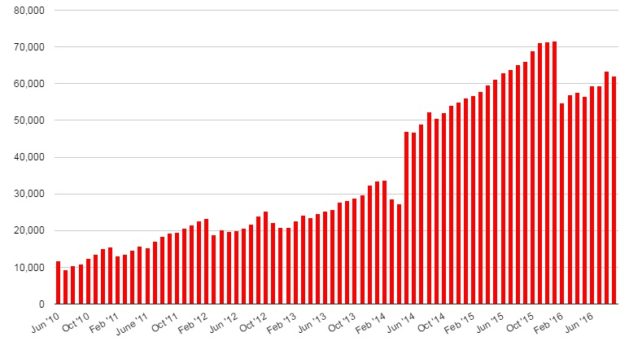
For those who are new readers, OpenSim is a free, open source virtual world platform that’s compatible with the Oculus Rift. It allows people with no technical skills to quickly and cheaply create virtual worlds, and then teleport to other virtual worlds. Those with technical skills can run OpenSim worlds on their own servers for free, while commercial hosting starts at less than $5 a region — compared to $300 a region for the same land in Second Life.
A list of hosting providers is here. Download the recommended Firestorm viewer here. And find out where to get content for your OpenSim world or region here.
Popularity
When it comes to general-purpose social grids, especially closed grids, the rule of thumb is: the busier, the better. People looking to make new friends look for grids that already have the most users. Merchants looking to sell content will go to the grids with the most potential customers. Event organizers looking for the biggest audience… you get the idea.
The total number of active users on the public OpenSim grids reached 32,215, a gain of 605 new actives compared to last month.
Metropolis was the big winner this month for new active users, gaining 370 to pass OSgrid for second place. FrancoGrid gained 226 new actives, Craft gained 151, and Kitely gained 117.
The Brazilian AllCity grid gained 105, possibly due to Brazilians coming over from AviWorlds.
Top ten most popular grids:
- InWorldz: 6,037 active users
- Metropolis: 3,501 active users
- OSgrid: 3,497 active users
- Island Oasis: 1,657 active users
- DigiWorldz: 1,503 active users
- Great Canadian Grid: 1,362 active users
- Kitely: 1,290 active users
- Lost Paradise: 1,157 active users
- Craft World: 1,082 active users
- AllCity: 716 active users
- Logicamp: 564 active users
Some grids were also better than others at bringing in new residents. InWorldz, a popular first step for Second Life users moving to OpenSim, reported 1,772Â new registrations over the past 30 days. However, its active users fell by 80.
Kitely was a very close second, with 1,738 new registrations. Virtual Brasil reported 652 new registrations and Genesis Global Journey reported 609 — while its active users fell by 10, to just 22 active monthly users.
The total number of registered users on the public OpenSim grids increased by 3,476 to a total of 484,310.
Meanwhile, the hypergrid as a whole is beginning to function more and more like one large grid, with an increasing number of multi-grid events, communities, and groups.
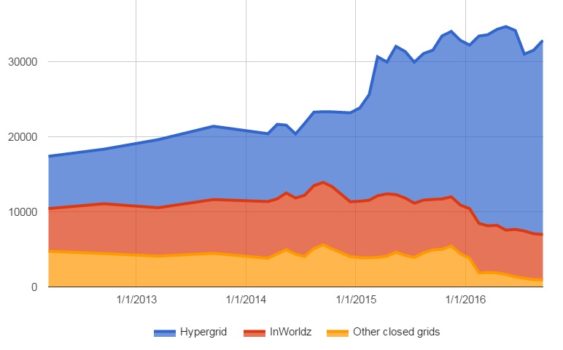
In fact, InWorldz now accounts for 86 percent of all active users on the closed grids. The 46 other closed grids have just 969 active users between them, the first time this number has dropped below 1,000 since I started keeping track in March 2012.
A closed grid is one that does not allow its users to travel the hypergrid. Closed grids also typically run all the regions on their grids, while open grids like OSgrid, Metropolis, and Atek allow users to connect regions run by third-party hosting companies, or that they host themselves on home computers.
In the past, most commercial grids were closed but recently more and more grids have turned on hypergrid connectivity and enabled filtering of content, so that creators who want their products to stay on that grid can have that option.
Looking at land area, the numbers are even more dramatic, since the hypergrid offers more renting options for users, as well as the ability to connect their own regions for free. Hypergrid-enabled grids currently account for 94 percent of all OpenSim land area.
Kitely Market listings drop on cleanup
The total number of products on the Kitely Market, OpenSim’s main commercial marketplace, dropped slightly this month, since the market removed a couple of merchants from their listings.
The market now has 7,978 products a drop of 28, in 14,980 product variations. However, the number of exportable variations actually increased by three items, to a new record high of 10,194.

The merchants who were removed declined to comply with Kitely Market guidelines, Kitely CEO Ilan Tochner told Hypergrid Business.
He did not specify exactly which of the guidelines were violated, nor which particular merchants were involved. Kitely’s policies cover maturity ratings, intellectual property rights, as well as how products should be described and categorized.
“Our main goal when we launched Kitely Market more than three years ago was to create a virtual goods marketplace that provides high-quality properly-licensed items to the metaverse,” said Tochner. “In order to achieve that goal we provide merchants with multiple ways to easily organize and manage their listings, including categories, attributes, product variations, product groups, and more. We’ve also had to create and enforce various guidelines to ensure that merchants do not list their products in a way that makes the marketplace harder for potential buyers to find what they are looking for.”
That means that Kitely keeps an eye on the marketplace to ensure that it remains well-organized, and also responds to user complaints about individual items.
Merchants usually comply with the guidelines once they understand them, he added.
“But there have been a few cases when we lost merchants due to our insistence on items being listed in a particular way,” he said. “That’s unfortunate, and we try to work with merchants when they show reluctance to work within our framework, but we believe it is more important that Kitely Market retain the high quality of its listings than retain all merchants.”
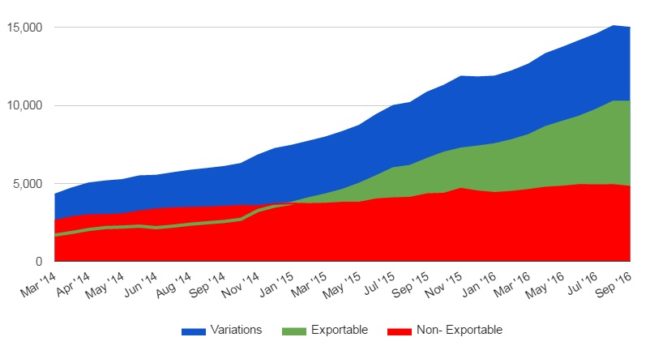
The Kitely Market currently delivers to more than 151Â different OpenSim grids, both closed and open.
The Kitely Market allows merchants to group multiple variations of a product under the same listing. Those variations could be different colors, sizes, payment options, prices, or permissions. So, for example, a merchant could offer the same item for export to other grids at a different price.
As merchants have become more and more comfortable with selling content to the hypergrid, the number of exportable items has been climbing, while growth in items that are non-exportable and can be used only on the Kitely grid has leveled off.
All hypergrid-enabled grids, by default, can accept Kitely Market deliveries unless they specifically configure their grid settings to keep these deliveries out. Grids that are not accessible via the hypergrid can still accept Kitely Market deliveries, if they choose, by following these instructions.
XMIR grid to go down at end of month
The mesh-focused XMIR grid will be shutting down at the end of the month, grid owner Geir Nøklebye told Hypergrid Business.
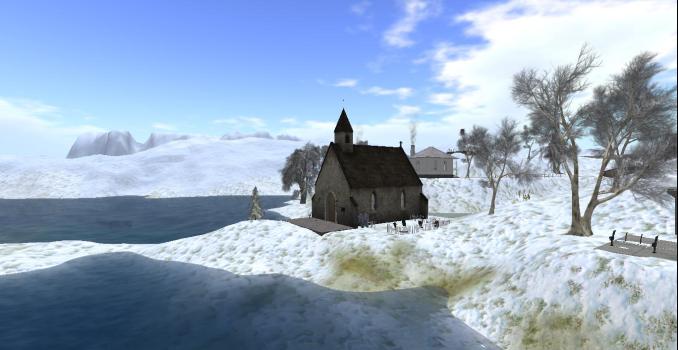

“I am to have major surgery at the beginning of that month,” he said. “It will be impractical to keep it running during the reconvalescent period that will take three to six months.”
We’ve been tracking the XMIR grid since the fall of 2014, and it currently has 37 regions and 39 active users. It is hypergrid-enabled.
Nøklebye added that he will also be suspending his Kitely Market store, and will probably not be able to contribute much to the Kokua viewer project during this time.
The XMIR Kitely Market store offers clothing, building components, avatar accessories, plants, and other mesh objects.
FarWorldz grid is down
Tall Adams, the owner of the OpenSim Virtual community on Google Plus and a well-known thought-leader, has been forced to shutdown her Farworldz Grid as a result of technical issues.
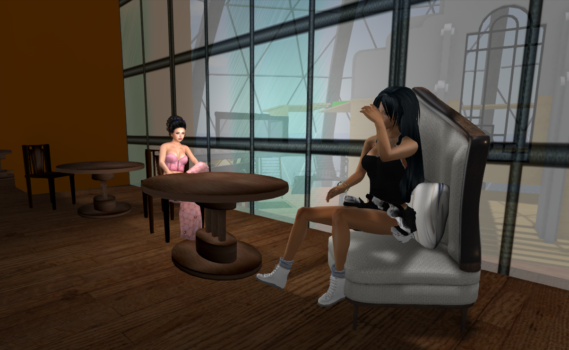
“I’m sorry to say that a hard drive has failed on my server and the OpenSim will need to be rebuilt,” she said in a post. “Fortunately I do take regular OAR and IAR backups so the loss wont be catastrophic. I will have it back as soon as I can get my head round the task.”
AviWorlds still down
AviWorlds is down for the ninth time since we began keeping track back in 2012. But it’s probably coming back up again, in one form or another, as it usually does.
However, it’s unlikely that we’ll ever see AviLabs, its sister company, back again. AviLabs provided hosting to several grids but the disastrous way in which recent server problems were managed forced all of its customers to flee to other providers — as was the case with Loff Virtual Worlds, which went to DigiWorldz – or actually start their own hosting companies.
Owner Alexsandro Pomposelli lost his previous tech staffers when he accused them of hacking and incompetence and they, in turn, said that he had stopped paying them. They are now running their own grid and hosting company, SkyLifeGrid.
Now Pomposelli is looking for new hosting for AviWorlds.
“I’m currently talking to Genesis and Zetamex,” he told Hypergrid Business.
AviWorlds was last hosted with Zetamex back in 2014, but the relationship ended after a series of distributed denial of service attacks.
To date, AviWorlds has tried:
- A business model based on charging the highest prices. That strategy lasted for less than two months.
- Being hosted by Dreamland Metaverse and by Zetamex. These are two best-known and most-respected OpenSim hosting providers, and both of these companies run a lot of grids for folks, handling all the technology issues and leaving the grid owners to focus on community building, content, and marketing. Things didn’t work out.
- Running their own grid. That didn’t work out either.
- Offering free quarter regions for all residents.
- Turning on hypergrid. Turning it off. Turning it on again. Turning it off. Turning it back on. Turning it off again for the third time.
- Running their own grid again, this time as an invitation-only private community.
- Running an enclave on Kitely. Â This actually lasted about a week.
- Selling the grid to someone else. That also ended very badly.
- Launching their own hosting company. We just saw how that played out.
Pomposelli has left a trail of failed relationships with customers, employees, and business partners. It is remarkable that he continues to find new people to do business with and still has any residents left.
Do people not know how to Google?
Speaking of residents, Pomposelli’s not holding out any hope that the folks who had regions on the AviWorlds grid or its sister grid AviBrasil will be able to get their builds up, pointing to a terms of service that does not require him to provide region exports, typically delivered in the form of OAR files, to his customers.
And he will not be bringing the existing builds back when he revives the grid, either, he said, claiming that he no longer has any backups of the grid’s content.
Pomposelli accused one of his former employees of hacking into his servers, taking all the data, and deleting all the backups.
He has previously also accused his former employees and customers of hacking into his social media and financial accounts and has levied many such accusations over the course of the past few years.
Genesis? What was that about?
Did you miss the part a few paragraphs back where Pomposelli said he was talking about hosting with Genesis?
That’s Genesis MetaVerse, formerly known as Stargazer Genesis. Not to be confused with Genesis Global Journey, a totally different grid.
Genesis used to be hosted with Pomposelli’s AviLabs, and also did some technical work for him. And, yes, when everything imploded last month, Pomposelli also accused the Genesis team of hacking and a bunch of other things.
Now Genesis MetaVerse has their new grid, and is in the process of setting up their own hosting company.
Genesis is now feuding with SkyLifeGrid, the other grid and hosting company that emerged out of the AviWorlds flame-out, over content copyright issues.
Regions on their grid run about $6 a month for a 20,000-prim region, which may be an unsustainably low price.
The company is also offering a free 30-day trial for new customers, founder Cliff Hopkins told Hypergrid Business. Hopkins is also known as “Dragon Genesis†in-world.
He added that it was news to him that AviWorlds was considering using Genesis for its hosting.
“He hasn’t contacted us at all since the day all the issues started,” Hopkins said. “But I will say this — if — and that’s a huge if — if Alex does come to us, we will 1,000 percent make sure that people’s OARs are secure.”
Given what just happened to AviWorld’s residents, this is a “no ifs, buts, or maybes” requirement.
“It was a huge screw up and mess,” he said. “I’m never letting this happen to anyone ever again.”
Kea Nation grid takes flight with help from Genesis
One of Genesis MetaVerse’s first customers is the aviation-focused Kea Nation grid, which launched in August.
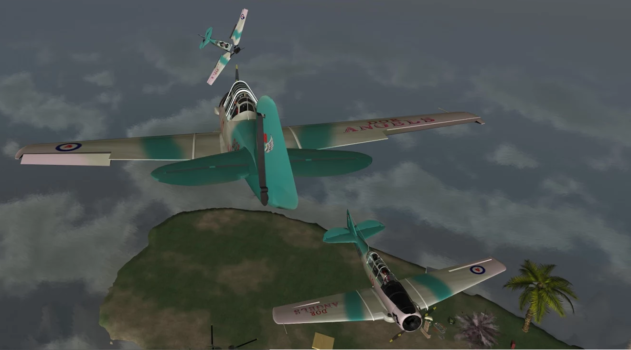
Kea Nation is a commercial grid based in New Zealand, with in-world currency from Podex.

“To date we have found the team from Genesis and other associated grids like Baller Nation extremely helpful and professional,” grid founder Don Hayward, also known as Da Admiral in-world, told Hypergrid Business.
The project started out in Second Life, as the DOR group, then was in AviWorlds for a year, as one of the largest groups on that grid. However, the grid has not been able to get backups of its builds as a result of the most recent collapse of AviWorlds.
“Unfortunately, we lost a years’ worth of building and work,” said Hayward.
The grid is hypergrid enabled, and the address is login.ballernation.us:8002.
“We will work with everyone for the advancement of OpenSim and hope to be a good neighbor to everyone,” he said.
Transitions
We added eight new grids to our database this month: Kea Nation, Kroatan Grid, Moonglow, Hypergrid Life, Maze Matrix, Osirus, Revo Grid, Mystery, and Second Chance.
The following 24 grids were suspended this month: Aheilos, Alluris Estates, Austeria-Grid, Avi Brasil, Avi Globe Grid, Avination, AviWorlds, Blackswan, CableGrid, Chaos Entertainment, Dream Forest, FarWorldz, Free World, Home Stone Grid, HomeStoneGrid, Lighthouse Point, NZlandia, Pomroys World, Radioactive Grid, Superborea, TaylorWorld, UFGQ Grid, Virtual Beach Party, and Watcher’s World.
Grids that have been suspended for more than two months will be marked as closed. If your grid isn’t on the active grids list, and not on the suspended list, it may have been marked closed when it shouldn’t be. Please let us know.
And if there’s a public grid we’re not tracking, please email us at editor@hypergridbusiness.com. There’s no centralized way to find OpenSim grids, so if you don’t tell us about it, and Google doesn’t alert us, we won’t know about it.
By “public,†we mean grids that allow hypergrid visitors, or have a website where people can register for or request accounts.
September Region Counts on the Top 40 Grids
The list below is a small subset of existing OpenSim grids. We are now tracking a total of 1,180 different publicly-accessible grids, 266 of which were active this month, and 200Â of which published their statistics.
All region counts on this list are, whenever available, in terms of standard region equivalents. Active user counts include hypergrid visitors whenever possible.
Many school, company or personal grids do not publish their numbers.
The raw data for this month’s report is here. A list of all active grids is here.
- OSgrid: 17,511 regions
- Kitely: 13,142 regions
- Metropolis: 5,569 regions
- Atek Grid: 4,365 regions
- Lost Paradise: 3,748 regions
- DigiWorldz: 2,514 regions
- InWorldz: 1,430 regions
- Lost World: 920 regions
- Great Canadian Grid: 860 regions
- SkyLife: 732 regions
- Virtual Highway: 725 regions
- GreekLife Grid Club: 573 regions
- 3rd Rock Grid: 402 regions
- The Adult Grid: 396 regions
- Kea Nation: 387 regions
- Open Virtual Worlds: 320 regions
- Virtual Life Brasil: 309 regions
- Tangle Grid: 295 regions
- Baller Nation: 280 regions
- Littlefield: 264 regions
- Encitra Home Grid: 241 regions
- FrancoGrid: 239 regions
- Virtual Brasil: 235 regions
- Island Oasis: 217 regions
- YrGrid: 209 regions
- ZetaWorlds: 208 regions
- Craft World: 207 regions
- GerGrid: 207 regions
- SirinHGpole: 205 regions
- DreamNation: 195 regions
- ZanGrid: 192 regions
- Neverworld: 188 regions
- Grid Nirvana: 183 regions
- Anettes Welt: 180 regions
- Logicamp: 179 regions
- Japan Open Grid: 154 regions
- Virtual Worlds Grid: 151 regions
- AllCity: 128 regions
- Dorena’s World: 118 regions
- Nemesis 3D: 113 regions
- International singers gather on Alternate Metaverse Grid for first annual International Day - April 15, 2024
- OpenSim hits new land, user highs - April 15, 2024
- Wolf Territories rolls out speech-to-text to help the hearing impaired - April 15, 2024
